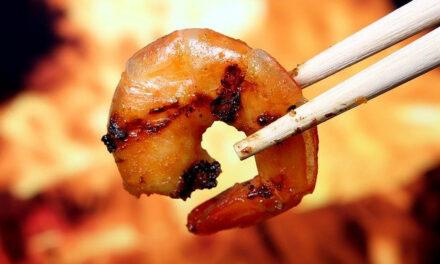For some people, bacon is something they think is unhealthy and harmful; however, this may not be true depending on whether you have diabetes or not. But still, you may have bacon as a diabetic, but there are a few things about bacon and diabetes you should look at before making the decision. Here we dig into those to address – When Can Diabetics Eat Bacon? When shouldn’t eat bacon? And, how to make bacon sodium-free and diabetes-friendly?
If you are after answers to the above questions, you’ve come to the right place!
Before anything, let’s define bacon…
What is Bacon?
Bacon is a product prepared from a pig and cured.
The meat is first cured using large quantities of salt, either in a brine or dry packing. The result is fresh bacon (also known as green bacon).
Fresh bacon may then be further dried in cold air, boiled, or smoked for weeks to months.
Fresh and dried bacon must be cooked before eating. However, boiled bacon is ready to eat, as is some smoked bacon, but it may be cooked further before eating.
Bacon made from other hog parts does not have the same flavour or reputation.
For example, ham hocks and further cuts taken from the ends or feet of the pig are ground and used to produce what is termed “green” bacon. This product has little fat and must be cut thinner than regular bacon to be eaten appropriately.
Jowls are also cured like spareribs and sometimes smoked; they are commonly used to make fried pork jowl bacon.
Fatback (the thick layer of back fat) is often fixed for use in lard production but may also be prepared for food. Canadian bacon, a leaner variety of back bacon, has become popular in the United States.
Generally speaking, bacon is made from the belly (American bacon) or back (Canadian bacon) cuts of pork. When a hog has been slaughtered and dressed, the side of pork left with the skin weighs between 30 and 50 pounds (13.5–22 kg).
The cure used for preparing bacon may be as simple as salt alone but often includes sodium nitrate or sodium nitrite. This cures the meat, gives it its characteristic colour, and provides resistance to bacteria.
Bacon may be prepared from many different cuts of heart; it is usually made from side and back cuts of pork, except in the United States where it is almost always prepared from pork belly (typically referred to as “streaky”, “fatty”, or “American style” outside of the US). The meat can be bought smoked or not; it can also be sliced before packaging.
As noted earlier, bacon may be eaten smoked, boiled, fried, baked, or grilled. It is eaten on its own, as a side dish (particularly in breakfasts), or used as a minor ingredient to flavour dishes (e.g. the club sandwich).
Well, what really is in the bacon, though?
What’s In Bacon? – The Nutritional Content
The nutrition content of the bacon 100g is noted below.

Now, let’s see the effect of bacon on diabetes. What does the research say about their relationship?
Research About Eating Bacon and Type 2 Diabetes
If you have type 2 diabetes, you know how important your dietary choices are.
There are many weight loss diet options, but which ones are best for managing type 2 diabetes?
A short strip of bacon is about two bites. But those two bites can contain up to 30% of the recommended daily limit of saturated fat, says Kimberlain.
And, that’s not all: A study from the University of Minnesota School of Public Health found that people who ate a diet high in processed meats, like bacon, had a 42% higher risk for developing type 2 diabetes than those who didn’t eat meat at all.
The verdict: Go ahead and have a couple of bacon every now and then (there are worse things you could do), but be sure that it’s not the star of your meal.
Research shows that some dietary strategies are safe and may help reduce insulin resistance. This can be a good thing since high insulin levels can lead to the development of type 2 diabetes.
Include Healthier Food Alongside The Bacon
Include a variety of fruits and vegetables in your diet because they’re high in vitamins, minerals, and fiber, but low in calories.
Oranges, grapefruits, apples, bananas, strawberries, and vegetables like carrots and tomatoes are all excellent choices.
Limit fruit juice intake because it contains carbohydrates without fiber to slow its absorption.
Choose whole grains instead of refined grains because they provide more fiber and nutrients than refined grains.
Whole-grain loaves of bread and cereals made with whole wheat or other whole grains can help keep blood sugar under control.
Strive for at least 3 servings of whole-grain foods each day.
Choose leaner meats such as fish, poultry without skin, extra-lean ground beef and pork tenderloin instead of higher-fat cuts such as regular ground beef, bologna and ribs.
How to Eat Bacon As A Diabetic?
Bacon is a vital part of a healthy diet for many people and within many cultures, but medical professionals agree it is a problematic dietary choice for people with diabetes.
If eaten in excess, its high fat and salt content can cause blood sugar spikes and severe health problems.
Nevertheless, bacon is also one of the most delicious things on the planet, so we’re going to look at ways to enjoy bacon as a diabetic.
Not all bacon is created equal. First, let’s look at what you’re eating.
Most bacon comes from the pig’s belly, with some exceptions like Canadian Bacon (also called back bacon) which comes from the back of the animal. While there are some differences in taste, size, and texture between these products, they are often interchangeable.
Bacon is cured before being cooked, usually by applying salt and other flavourings to the meat.
The amount of salt varies by type (and brand), but it’s good to know that unsalted bacon exists, along with varieties cured by other methods such as smoking or applying other spices like pepper or cinnamon.
Ever wondered how Oscar Myer Low Sodium Bacon tastes like? Target sells them.
While sodium plays an essential part in maintaining bodily functions such as fluid balance and nerve conduction, too much of it can cause health problems like high blood pressure in everyone.
You don’t have to set aside your love of bacon when diagnosed with diabetes. It is a tasty treat, but it’s also high in protein and will help keep you full for longer.
But with the many varieties of bacon out there, how do you know which to choose? Here are a few different types of bacon that can be a part of a healthy diabetic diet.
Best Types Of Bacon For Diabetics
Choosing Your Bacon Wisely…
When selecting your bacon, look for lower-fat options that don’t contain too many additives and preservatives.
If you are making your own bacon at home (which is unusual but not inconceivable!), then you have complete control over the ingredients that go into it. Just don’t use lots of sugar as the video suggest!
Try Turkey Bacon Instead
If pork isn’t an option, turkey bacon may be the next best thing (though some argue that vegetarian “bacon” alternatives are better).
Turkey bacon is leaner than pork bacon and contains less saturated fat per serving. It also has fewer calories than pork bacon.
1. Back Bacon
Back bacon, also known as Irish Bacon, is nothing but pork loin that has been cut and cured.
Like any other meat, it is recommended to grill it since you do not want to add too much oil and fat. Through grilling, you can remove excess fat from the meat.
It takes about 12 minutes to cook it in a pan, but grilling can take about half the time.
People who have diabetes should know that back bacon comes with less sodium content, making it easier for them to consume.
2. Collar Bacon
Collar bacon is an excellent choice for those with diabetes. While it doesn’t technically come from the belly, the collar is a cut of meat that will give you an authentic taste of bacon.
This type of bacon is excellent if you’d like a more traditional flavour and texture to pepper your dishes with.
It’s often fried whole, but you can slice it up if you prefer a crisper, more crumbly texture.
Because of the low sodium and fat content, collar bacon is a good choice for people who want to avoid heart disease and diabetes.
Also, it retains its shape even when cooked; it makes an excellent addition to pasta dishes and sandwiches.
3. Jowl Bacon
Keep bacon in your diet, even if you have diabetes. The trick is to eat it in moderation.
Yes, this will be difficult because bacon tastes so good, but the absolutely delicious flavour of bacon can always be preserved by adding a small dollop of Grease-Weezee to your next batch.
Watching your intake also means being responsible when eating things like jowl bacon.
The Worst Types of Bacon for Diabetics
There is rarely anything safe when it comes to cured meats and diabetes. However, some cured meats are better than others if you’re trying to avoid diabetes complications.
If a person has diabetes risks, they might want to think twice before indulging in savoury foods.
1. Speck
Compared to the other types of bacon, Speck is in an interesting group because it has its own unique flavour.
It is pretty strong, but it isn’t bitter like most types of smoked bacon with smoked salt.
For someone goes low-carb, this is an option that could be considered a substitute for heavier breakfast meats. But for someone with diabetes, one should be cautious.
2. Pancetta
Pancetta is an Italian version of cured pork belly high in sodium. Its high-fat content will also help you gain weight, which may further exacerbate your condition.
If you have diabetes – or even if you don’t – it’s best to keep bacon consumption at a minimum, but when you choose the meat, look for uncured varieties and pay attention to the fat and protein content on the label.
You should be careful regarding any type of bacon that has a higher sodium content and keeps a keen eye on how much bacon you’re consuming in your diet.
Bacon And Egg vs Bacon Only – What is Better for Diabetics?
Many of us enjoy the tradition of a hearty breakfast with eggs and bacon. But at what cost? Although high in protein, the combination of eggs and bacon can be difficult to digest, so experts say they may cause stomach upset if eaten together so often.
Additionally, combining the two foods can decrease the absorption of antioxidants found in eggs.
In addition to affecting your digestive system, food combinations can help diabetics manage their blood sugar levels.
Rich in Nutrients
Eggs may also help prevent diabetes. Eggs have been found to help control Type 2 Diabetes; it is essential to first understand what’s good and bad about both foods.
Unlike white bread and pasta, which are stripped of their nutrients and natural enzymes, bacon is a nutritious food for diabetic patients and should be included in a balanced diet.
On the other hand, with their complete profile of essential amino acids, vitamins, minerals and fatty acids, eggs rank high on the list of healthy foods for diabetics.
Source of protein
Eggs are rich in protein, and protein is essential in helping to build muscle, especially in people who suffer from type 2 diabetes.
Protein helps keep your blood sugar in check and helps prevent spikes or dips in your glucose levels.
All cooked eggs are nutritious
Eating a hard-boiled egg is one way to supplement your daily protein intake and give you the lean protein you need for better health. They’re easy to pack in a lunch or eat on the go, and they’re compatible with almost any type of diet.
You should have one hard-boiled egg each day, but no more than that (just a few eggs from the carton will multiply your daily intake of healthy protein). You can also substitute an egg for a high-protein food if you want to cut back on calories or carbs.
The same goes for bacon…
So, for a diabetic, just keep checking for the bacon and add eggs to your diet occasionally to help keep your body healthy. The combined effect of bacon and eggs will give you a boost in energy.
Health Tips for Eating If You Love Bacon
Many people think that all bacon is unhealthy, especially if they have diabetes. While this may be true when you’re talking about regular bacon, some types of bacon are actually okay for people with this condition.
Bacon is a versatile, delicious food that can be enjoyed for breakfast, lunch, or dinner. Unfortunately, bacon does not often love you back when it comes to heart health.
If you’re in love with bacon, you can make your own salt-free bacon in your home. It’s the best you can do if you have type-2 diabetes too.
Most people don’t eat bacon because they’re trying to save their own lives, but here are a few tips to help you with your bacon consumption while improving your life!
Ingredients
1 pound pork belly, cut 1/8th inch thin
2 tablespoons maple syrup + 2 teaspoons maple sugar
Natural Hickory Liquid Smoke of the Highest Quality
4 tablespoons liquid smoke (optional) (add a pinch of salt-free hickory smoke powder or extra smoked paprika to the rub). Cedar House Ultra was utilized.
2 tsp. paprika (smoked)
1 teaspoon freshly ground black pepper
1 teaspoon cumin powder
Preparation of the Pork Belly
Pork belly needs to be sliced as thin as possible, whether you purchase it sliced or unsliced. This can be done with a sharp diabetes-friendly knife before the pork belly is cooked or purchased pre-sliced.
Making the Bacon
One of the best ways to cook bacon is in the oven. This way, you get perfect, even cooking, making clean-up a breeze.
Preheat your oven to 200°F and line two baking pans with tin foil. Place wire cooling racks (like cookie sheets) on top of the foil, and then place the strips of pork belly on the racks, careful not to overcrowd. You’ll probably use two or three baking pans.
Applying the Syrup
Combine it with the maple syrup in a small bowl if you’re using the liquid smoke.
Use your hands to rub the spice blend into each piece of bacon. Next, brush each slice of bacon generously with the maple syrup and liquid smoke trick for an extra smoky flavour.
This is where you get to have fun.
You can spread out the pork belly strips on a baking sheet and do whatever you want. You can rub them with maple syrup, honey, Sriracha, vinegar, or anything you want!
And then, throw those pork belly strips into the oven for 1 hour.
Final Stage of Cooking
Eat it twice cooked. If you want to cut back on the fat and calories in bacon, eat it twice cooked.
About halfway through cooking your pork belly, take it out of the oven and let it cool on the counter for about 10 minutes. This will allow you to drain off some of the fat (almost a third), so when you put the pork back in the oven to finish cooking, less fat and calories are left in your meat.
Then, cook a couple of bacon strips in a big sauté pan or cast-iron skillet until crispy spots appear, about 2 minutes per side over medium-high heat.
Remove the twice-cooked bacon from the skillet with chopsticks and set it on a paper towel-lined dish.
Repeat until all of the bacon has been cooked.
When Should You Not Eat Bacon?
Bacon is a lump of processed meat, relatively high in salt and fat. This means that it is not recommended for people with certain medical conditions.
For example, if you have type 2 diabetes and a severe intolerance for sodium, a high salt diet can increase your blood pressure, which puts stress on the heart and blood vessels. This can lead to heart attacks and strokes.
The fat content raises blood glucose levels and adds empty calories, leading to weight gain.
It’s also vital to watch sodium intake because foods like bacon are often packed with sodium.
Foods rich in saturated fat increase cholesterol levels, leading to heart disease and stroke over time. Saturated fats also tend to cause weight gain since they are very high in calories.
Alternatives Healthier Breakfast Options For Diabetics
There are a number of healthy alternatives for people with diabetes in order to fulfill their nutrients requirement at breakfast.
Homemade Smoothies
People on a type-2 diabetes diet is often full of complex carbohydrates and high-sugar foods such as breakfast cereal and juice. While these items might taste great, they can cause blood sugar levels to increase rapidly, making a health condition worse.
A homemade smoothie is healthy and nutritious for diabetics and offers a significant boost in energy. It’s a healthy breakfast alternative for people with type-2 diabetes.
Smoothies are easy to make and require very little time. They contain fibre from fruit and vegetables, which helps slow down the rate at which the body absorbs sugar.
They also fill and prevent feelings of hunger that typically lead to unhealthy cravings throughout the morning hours.
The best part about making a smoothie is that it can create a variety of flavours that suit personal tastes.
We previously covered benecalorie, AdVital Powder, Benefiber and Nutricia Fortisip Compact Protein which you could use in those smoothies depending on the doctor’s recommendation.
Yoghurt smoothies
Yoghurt contains probiotics that help the digestive system stay healthy by minimizing harmful bacteria levels.
Yoghurt also contains calcium and protein but relatively few calories compared with other dairy products, such as milk or cheese.
Soy or almond milk smoothie
Plain soy or almond milk smoothie can make an excellent breakfast choice for people with diabetes.
Soy milk contains little carbohydrates and no fat, while almond milk is low in carbohydrates and high in monounsaturated fats.
We previously covered Glucerna, Ensure and Boost, which you could consider too.
Lean meat and eggs
At breakfast, people who eat lean meats, such as chicken, duck meat, turkey breast or grits, have higher energy levels than those who do not.
Eggs contain protein and minerals, such as selenium, vital for good health.
Wheat toast with peanut butter
Whole grain bread is high in fibre and low in fat, making it an excellent choice for people with diabetes. Peanut butter has healthful fats and plenty of protein.
Wheat products help people to feel full for longer after eating them.
The combination of whole-wheat toast with peanut butter makes a healthy breakfast option for people with diabetes.
Oatmeal
A bowl of oatmeal is an easy, nutritious way to start your day. However, it can quickly unravel into a high-carb disaster if you aren’t careful about what you add to it.
Stick with a small amount of fruit and some nuts on top, or use pure maple syrup instead of sugary toppings.
You can also find other lower-sugar alternatives for sweeteners. One of the easiest ways to achieve reasonable blood sugar control is to stick with foods that preserve their natural state and limit hard foods on your pancreas.
We previous addressed when Honey Nut Cheerios is good for people with diabetes…
Conclusion
The conclusion to the article reiterates the main point — people with diabetes should know that there are some types of bacon that won’t harm them if they practice moderation in their consumption.
The article intends to answer the question: can people with diabetes eat bacon? The truth is that many types of bacon are healthier than you would think. They typically add a lot of flavour and texture to many foods that you wouldn’t be able to make without them.
There are still some risks, however. If you have type-2 diabetes or have risk factors for developing it, it’s still important to oversee your nutritional intake.





















